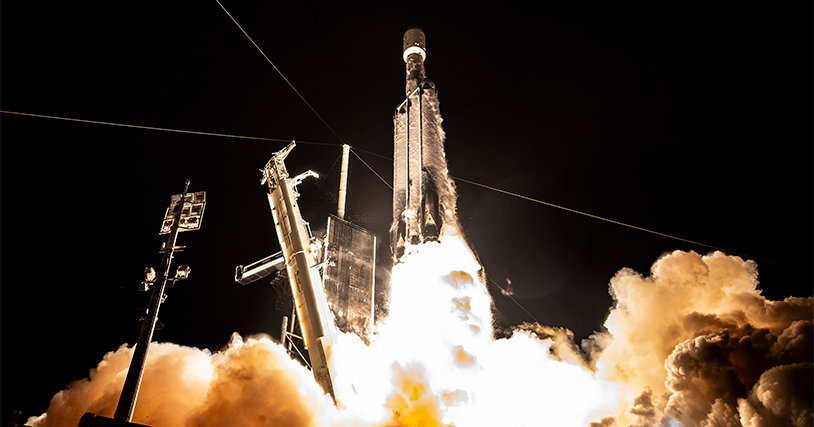
The launch of JUPITER™ 3 marked a significant milestone on the journey toward bringing increased capacity to customers across the Americas around the world. SpaceX's Falcon Heavy rocket launched JUPITER 3 to a geostationary transfer orbit (GTO), the first step on its way to geosynchronous orbit (GEO). Here we detail the orbit raising process, or how the satellite makes its way to its final position in a perfect geostationary circle.
The Parking Lot in Space: Orbital Slots
Each GEO satellite is designated its own orbital slot, or its ‘parking spot’ in space. The orbit raising process is akin to a fancy on-ramp maneuver that the satellite goes through to get into its final parking spot. JUPITER 3 is assigned an orbital slot at 95 degrees west, nearly 22,300 miles from Earth. The 95 degrees refers to the longitude position.
Orbital slots are allocated and assigned by the International Telecommunication Union (ITU), ensuring that hundreds of GEO satellites can coexist in space without the danger of bumping into one another. In addition to the actual position above the equator, the ITU will also assign a range of radio frequencies for the satellite--this prevents satellites from interfering with each other as they send and receive signals from the earth.
Each satellite stays in orbit by maintaining enough velocity to resist the gravitational pull of the Earth. For JUPITER 3, that velocity is about 3 kilometers per second relative to space, but is stationary when viewed from Earth. The satellite doesn’t have to use fuel to maintain this speed, it only uses fuel to adjust its orbit and remain inside its assigned orbital slot, at a fixed location above Earth. The velocity is achieved when the satellite separated from its rocket booster.
The electric ion thruster propulsion system on the satellite uses about 20 kilowatts of power to help raise the orbit and get the satellite into position. As the satellite makes trips around the earth, it gradually increases its distance from the ground by about 125 miles with each rotation. Imagine piloting a 26-foot-long school bus moving at several kilometers per second to reach an assigned parking spot that is only about 60-70km wide!
After the spacecraft arrives at its orbital slot, the electric ion propulsion system transitions to a low power “on-orbit” mode and all that power that was used for orbit raising is now available for the payload to use. The expected lifespan of a GEO satellite is about 15 years, which is based on when it will run out of onboard propellant. If the satellite operator uses the on-board fuel efficiently, they can extend past the standard 15-year lifespan.
Once on station, the next item on the agenda is to deploy the six main reflectors. The reflectors are folded up securely against the side of the satellite during launch. To release them into the proper deployed position in space involves a series of highly choreographed events to unfold all the hinges in the exact right order to achieve proper deployment.
With the reflectors fully deployed, then the in-orbit testing process begins, which includes the payload testing and then testing of the entire end-to-end ground network. The payload testing validates the many miles of coax and waveguides that were installed on the satellite and ensures that every pathway is performing to the specifications that the system requires.
Explore our interactive infographic about JUPITER 3 to learn more about how satellites work.